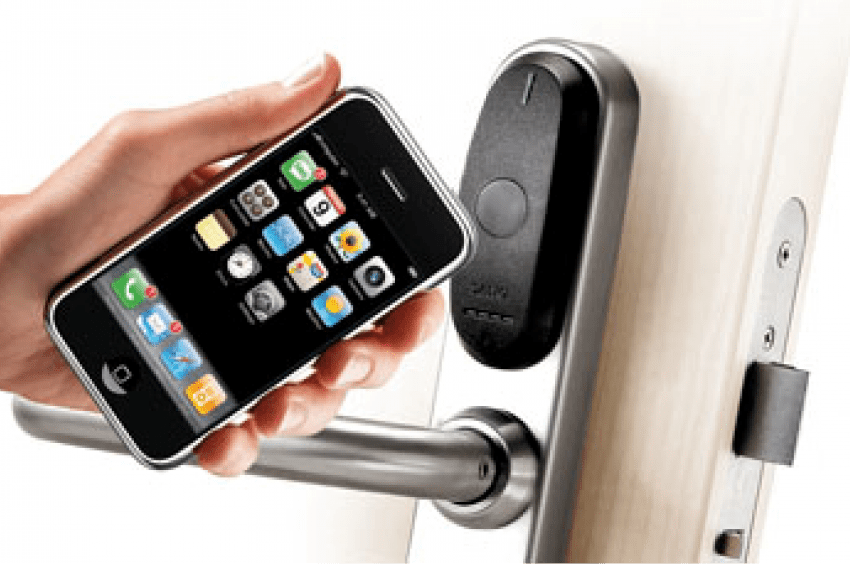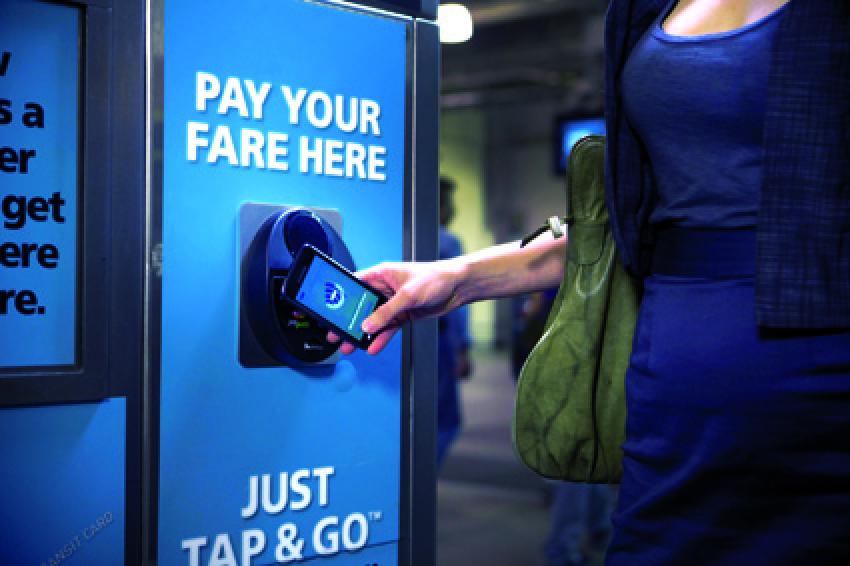Is Access Control Ready for the NFC Smartphone Future?
23.04.2012 - The move towards getting Near Field Communications (NFC) technology into the hands of customers appears inexorable as businesses look at ways of optimising mobile payments and acce...
The move towards getting Near Field Communications (NFC) technology into the hands of customers appears inexorable as businesses look at ways of optimising mobile payments and access control technologies. There is still a way to go before the benefits are truly realised but as recent announcements show progress is being made.
Keith Carey, UK Marketing Manager for Salto Systems, considers some of the latest developments.
Electronic access control has been with us for over 30 years now and in that time it has evolved from simple magnetic swipe systems to today's sophisticated wireless products that can control thousands of doors on multiple sites from a single location. Thanks to advances in RFID technology it currently offers one of the most convenient and secure forms of building security and is able to control who can access what, where and when 24/7. But technology as ever is a moving target and in the drive to create totally keyless smart buildings there are signs that a new kid on the block is coming along to move things up to the next level.
At the recent International Consumer Electronics Show (CES) in Las Vegas, Nevada, a number of smartphone manufacturers including Android, Samsung and BlackBerry demonstrated how their new models would be able to be used as ‘keys' to unlock doors, much like smart cards do today. And with both Microsoft and Apple reportedly planning to make their new model Windows Phone and iPhone respectively support NFC in 2012, it is predicted that the proportion of NFC-enabled smartphones in the marketplace will increase from less than their current 10% to over 50 % in the next two to three years.
What Is NFC and How Will It Work in Access Control?
NFC or Near Field Communications to give it its full title is an RFID-related technology that allows for secure, close range data transfer including but not limited to payment information. It operates at 13.56 MHz over a range of a few centimetres (typically less than 4 cm) and complements many popular consumer level wireless technologies.
The main difference between RFID and NFC is that while RFID can be used beyond a distance of a few metres, NFC has a very small range and is used where a more secure method is needed, such as using a contactless credit card to pay for something or unlocking a door. In essence, NFC is an extension of RFID, but it is more secure.
With NFC technology in your smartphone, you can use it as if it were a credit card and many manufacturers are getting ready to support NFC technology by inserting a form of electronic payment wallet or e-purse into their handsets that will enable users to make contactless payments in much the same way as Barclaycard's contactless credit card.
Just last month Visa announced its approval of Samsung, LG Electronics and BlackBerry smartphones to utilise its new payWave technology as part of efforts to widen adoption of mobile device wireless payments. It certified the Samsung Galaxy S II, the LG Optimus NET NFC, the BlackBerry Bold 9900, the BlackBerry Bold 9790, the BlackBerry Curve 9360 and BlackBerry Curve 9380 models as mobile payment devices, able to work with the current 185,000 estimated contactless payment terminals in shops and stores around the world.
The smartphones all have the Visa payWave app on a SIM card inside the handset which includes Near Field Communication technology, and this allows users to securely pay for their goods by waving their phones over an in-store terminal. Analysts says companies like Visa are working with banks, mobile network operators and key handset partners to ensure that future payment technologies are as easy, intuitive and secure as card-based transactions are today while predicting that NFC transactions could grow to a market worth some $40 billion by 2014.
Payment Device into Access Key
So although the current driving force behind NFC development is principally geared towards creating a new form of payment technology, clearly many other uses beyond mobile financial payments are being envisaged.
Technology is moving at such a rapid pace that, just as RFID technologies such as Mifare, DESfire, HID iClass, Legic Advant and Picopass have replaced magnetic strip cards which to a large extent replaced a lot of mechanical keys, the smartphone now looks like it could realistically begin to augment the proximity card. One of the first areas where this will probably happen will be in the world of access control and more than likely among its earliest applications will be use as an "electronic key" in the hotel industry.
Just as proximity cards gradually replaced swipe cards in hotels, NFC enabled smartphones seem likely to become the next step by emulating proximity Mifare cards and be used as a hotel room key. It will work like this. Guests will make a hotel room reservation via the internet or by telephone as they do now, and will then receive their booking confirmation on their smartphone.
Ahead of their arrival at the hotel, they will receive a welcome message and a reminder to check in to their room via their smartphone. When they arrive at the hotel they will bypass check-in and its queues and go straight to their room, their hotel room "key" having been sent to the smartphone over-the-air. On arrival at the room they simply present the smartphone to the reader on the escutcheon - as they would do now with a conventional Mifare smart card - and the door will unlock. The door lock will then communicate with the front desk PMS system (Property Management Software) to let the hotel know the guest has arrived and entered the room.
As with a current proximity based hotel "key" the smartphone will only be able to open the door for the programmed access time. At the end of their stay guests will check out with their NFC smartphone, and once the digital hotel room key stored in the smartphone expires, access rights to their room are cancelled and the "key" is then automatically deactivated from the smartphone.
Summary
Nothing happens overnight but it generally happens faster than we expect. NFC as a technology has been around for a while but it is only now that it is starting to gather pace so we will shortly see how the market adapts to it and adopts it as new payment systems and enabled smartphones come online.
It extends the ability of contactless card technology so its future, once all the issues between developers, the electronic payments industry and smartphone manufacturers are resolved, looks bright. And because the smartphones will use contactless technology in the form of an embedded computer chip, it should be a much more secure payment and access device than the current generation of RFID cards, tags and tokens we use today.
It will enable users to share business cards, make transactions and payments, access information from smart posters and provide "keys" for access control systems. And as many companies currently use contactless ID cards to control access to their facilities, NFC should be able to reduce the cost of card issuance and management and thus deliver tangible cost savings to operators and users.
Whatever happens, it's going to be interesting to watch this next stage of development in the electronic access control market.











